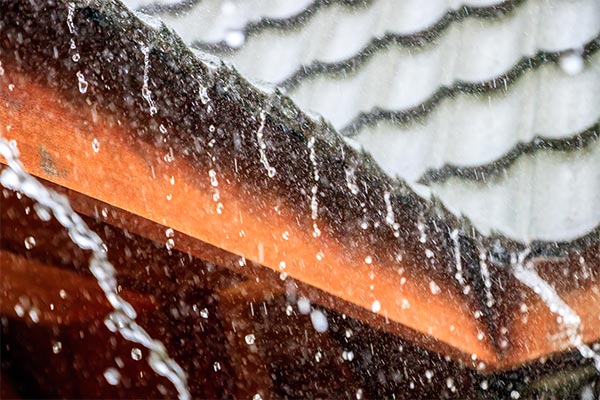What types of roof repairs are usually needed?
After a comprehensive inspection, recommendations will include routine maintenance needs, as well as repairs of any areas that have failed or are near to failing. This may include small patches of damaged flashing or missing shingles, or larger repairs that replace old, damaged materials such as waterproof membranes. With the most severe damage, roof replacement will be needed. If there is significant water or wind incursion, or materials have failed, a roof repair will need to be more involved than a simple patch to do the job well and ensure a safe roof.
With all roofs, some type of sealing and waterproofing will prevent additional water damage if it has occurred. Missing shingles and tiles can be replaced to match the color and shape of the existing roof.
Modern roofing materials have improved dramatically over the last twenty years. Repairing or replacing old roofing materials, both those involved in the roof structure and those visible on top of the roof with newer ones will improve the longevity of the roof and protect the value of the building.
What is involved in a comprehensive roof inspection?
For both residential roofs and the more complex commercial roofing systems, there are known weak spots or areas prone to trouble, such as metal flashing, HVAC systems, and gutters. A comprehensive roof inspection involves overall assessment for damage, including missing tiles or shingles, areas of the roof that contain metal flashing, gutters, or HVAC installations, an inspection for water pooling or areas where water incursion has occurred.
The integrity of materials is assessed for cracking, splitting, blistering, or other weather and age related materials failures. Roof insulation may be assessed, and areas of suspected water incursion will be assessed both from the roof and from inside the building to identify and quantify damage.
What is a roof patch?
A patch is the smallest and least expensive type of roof repair, and usually involves replacing a failed or missing materials, such as a tile, shingle, or damaged bit of metal flashing. This type of patch occurs before there is significant damage to the roof from the missing or failed material, and usually will not involved repairs to the layers of the roofing structure underneath the patch.
When will a roof have to be replaced?
Roof replacement is the most significant repair to a roof and the most expensive, and is not recommended lightly. This recommendation will be made if there is widespread failure of the materials of the roof, with significant water or wind damage already impacting the structure of the building underneath.
If the roof has had a number of previous patches and repairs, and is overdue for replacement, the decision to use efficient modern materials may be in the best long-term interest of the building. With modern structures and materials replacing a damaged and inefficient roof, expensive heating and cooling costs may be immediately lower with the new roof.
For many commercial buildings, the decision to add health benefits and energy efficiency to the building begins with a new roof design, and can include water catchment, rooftop gardens, green spaces, and other benefits of a new roof. In some regions, tax credits are applied for energy-saving roof replacement and new roof designs.
What is the recommended maintenance schedule for a roof?
Routine inspection and maintenance of a commercial roof should be carried out twice a year. Additional inspection, maintenance, and repair should also occur after any weather-related events or if any signs of water or wind damage are noted.
For roofs over twenty years old, and those that have been extensively patched and repaired after significant weather events such as hurricanes or tornadoes, a cost-benefit analysis of additional repairs and inspections over the cost and benefits of a new roof with energy saving materials can be done with your roofing team. The people who have inspected and completed maintenance on your roof may be able to anticipate what will be needed in the near future, and describe some of the newer roofing materials and designs that can impact the value and health of the building in the long-term.
Call Dan Tennis Roofing at (954) 485-7778 or send us an email to schedule your roof repair or replacement.
What is the best roof design to avoid problems?

Roof design is specific both to the climate of a particular area and for the purpose of the building. Materials, structure, and design are all engineered to handle heavy winds and torrential rain while in some parts of the country, heavy snow loads in others. In all cases, though, the overall goal is to protect the building from incursions of weather, and keep the interior of the building- air quality, temperature, and humidity- comfortable and safe.
Most roofs last from 20 to 50 years, but that is assuming regular inspections, maintenance, and repair. It is also assuming no significant storm or weather-related damage. When damage occurs to a roof and is not noticed, water, wind, heat, and humidity can begin to undermine the structure. By the time water damage is noted on ceilings, there has been significant damage throughout the roof structure and to the underlying insulation. Replacement and repair at this point will need to deal with mold and mildew in the walls to protect air quality inside, as well as the water damage to walls, ceilings, and the various parts of the roof structure.
Common roof designs include flat or sloped, with architectural detailing that matches the design of the building. Repair and replacement will match the architectural design elements of the building, while using modern materials that will give a safe and long-lasting roof.

